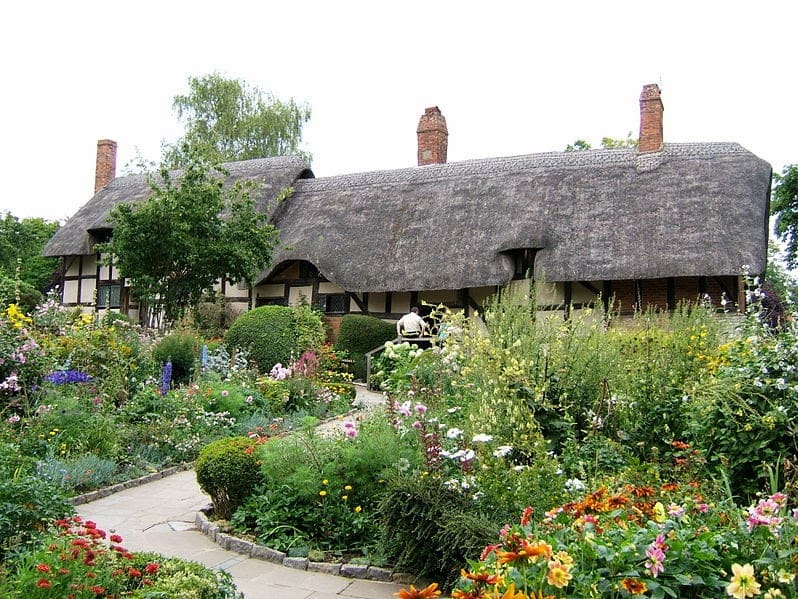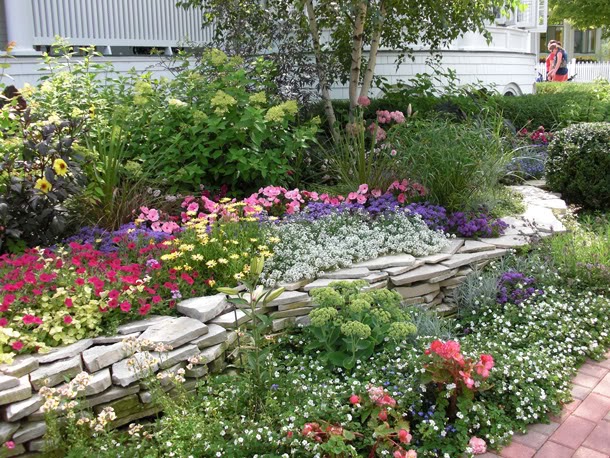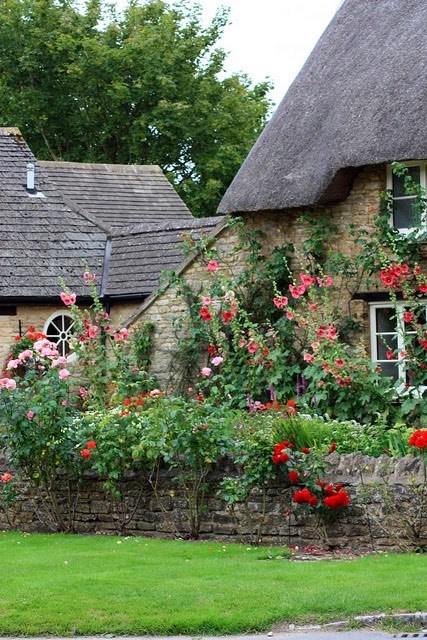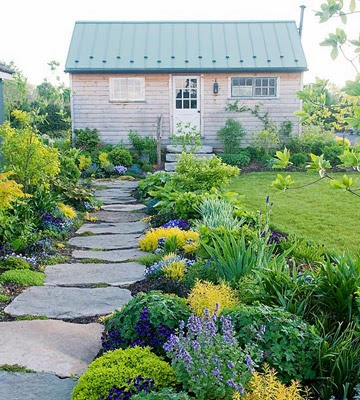C O T T A G E G A R D E N S
The free-flowing nature of cottage gardens makes a gardener want to throw on a big straw hat and a pair of overalls and spend days puttering in it. It is all about color, and free expression and, well, charm.
Plants are massed and abundant in a cottage garden.
They often seem to be place haphazardly, but sometimes they are a bit more restrained in plant choices. (By the way, this next photo is one of my favorite garden photos of all time.)
They lend themselves to all kinds of hardscaping options, so long as the form is free-flowing. Stone walls bring to mind traditional English cottage gardens and paths of flagstone can look like they just sprang up out of the garden. The best paths are those where the plants soften the edges.
 |
| The gardens of Anne Hathaway (William Shakespeare’s wife). Richard Peat photo |
 |
| Jack Barnwell-designed garden at the Iroquois Hotel on Mackinac Island. The Impatient Gardener photo |
C O T T A G E G A R D E N S at a glance
H A R D S C A P E : Many materials are suitable to cottage gardens as long as they have an informal look to them. It’s even better if they look a little “lived in.” Lines are using arching rather than angular. Fences are naturally suited to cottage gardens as well and perhaps none more so than the traditional white picket fence, although many other styles also work.
P L A N T S : A cottage garden is a plant lover’s garden. Almost any variety of plant can (and should) be worked into the design. However, planting in drifts is far more attractive than one plant of each variety. There still needs to be flow in any design, even an informal one.
M A I N T E N A N C E : I think cottage gardens have peaks and valleys for maintenance. They will be a lot of work to establish, if only because of the sheer number and variety of plants, but once they are grown, there will be a lot of maintenance in spring and fall to get the garden cleaned up and not as much in mid-summer when full plants will keep weeds at a minimum. From there, plant selection determines how much work there is to be done. If low-maintenance perennials are chosen, you can probably sit back and relax in summer, but some plants need to be coddled a bit.
G A R D E N E R T Y P E : Gardeners who love an abundance of plants will be naturally drawn to these gardens. The nice thing with cottage gardens is that if you don’t like where you’ve put a plant, you can usually move it elsewhere in the garden without having to redesign the whole thing (try doing that with a formal garden). Cottage gardeners love poking around their gardens and find it difficult to just sit down and enjoy them without popping up to pull a weed or deadhead a spent bloom. I think cottage gardens are also good for indecisive gardeners. You can have a bit of everything. But people who like a natural order to things might get the shakes around cottage gardens. They can be a little wild, which will work for some but send others in search of symmetry.







8 Responses
I don't like structured, formal gardens and little boxwood hedges drive me nuts. I just want to take a pair of shears to the side and cut an escape route for all the plants penned up inside. I absolutely love the carefree exuberance of cottage gardens. The top 2 photos are my favorite because I love the backdrop of trees. :o)
Ha! That cracks me up. "Free the plants!" I love it!
This is one of my favorite garden styles!! When I first started gardening, I thought cottage style gardens would be a breeze. They are actually quite challenging – takes a lot of planning and tweaking to get that free-flowing look that is natural, colorful and rhythmic. But I still adore it!
You're right, Loi, it's all about the tweaking.
It would be my dream to have this style of garden. However, I know that this will never happen because in reality I prefer a more structured look.
One of my favorite types of garden. Lovely pictures too. I am learning to use more natives as I design my gardens in a cottage style.
If you live in Anne Hathaway's cottage then it looks like anything works! Otherwise I like the more restrained schemes like the roses and hollyhocks.
Aaaah! Thank you for that!